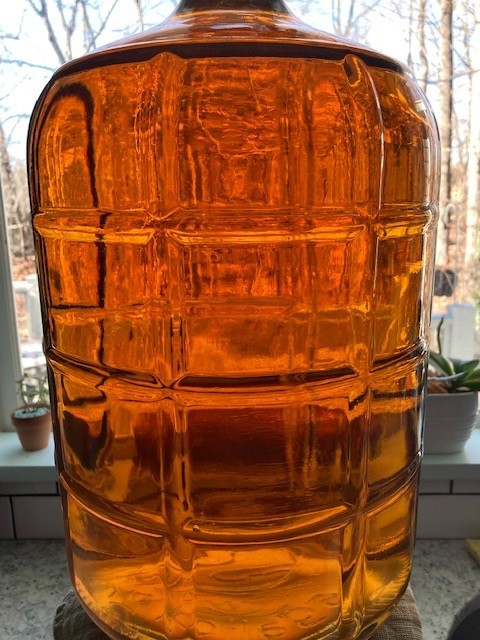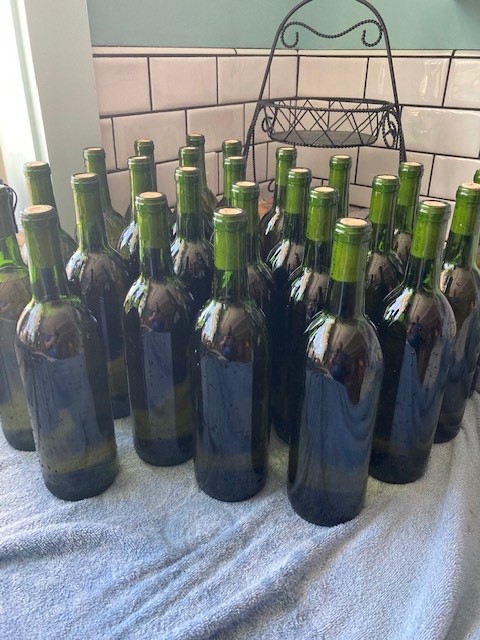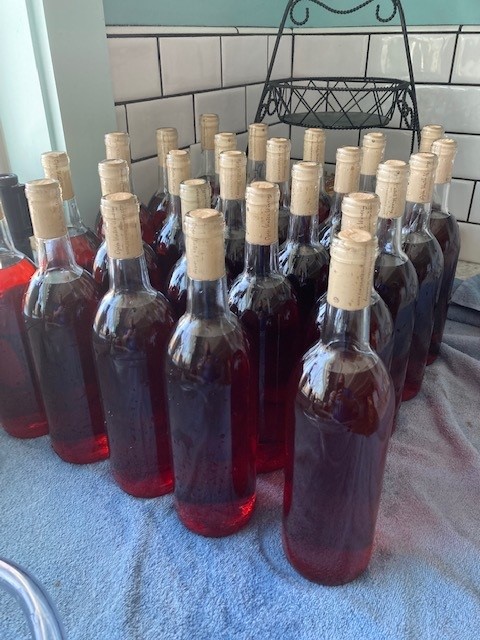Sweet Potato and Bottling Update
Productive weekend in the winery, got both the Riesling and the mixed berry bottled. The mixed berry is a blend of blueberries, strawberries, blackberries, and raspberries, with a little lemon added to put an edge on it. It's just for sipping and sharing, and it's a fairly popular selection among those who have to endure my wines. I made the Riesling as a gift for the wedding of a friend's daughter who is getting married in March. I've been bulk aging both for a while, especially the Riesling. It's been bulk aging for almost 5 months, so it will have well over 6 months in bulk and the bottle by the wedding date. Maybe a little on the young side but being a white wine it doesn't need a lot of aging so it will be fine. It has excellent clarity, and it will look awesome in a wine glass, held up high for a toast. I tasted it during bottling with a piece of chocolate pound cake and oh man, it was nice! Excellent pairing to remember for sure! I'm guessing it will go just as well with wedding cake also! The mixed berry is what I would classify as "off-sweet", slightly sweetened but not to Bojangles sweet iced tea levels. I haven't tried pairing it with anything, it's just a chill-in-the-fridge, sip-on-the-back-porch wine, perfect for warm summer evenings. Pics of the bulk Riesling and both in the bottle are below.
The sweet potato wine has completed primary fermentation. The SG is hovering around 1.0, so it's pretty much right on schedule. As you can see from the picture on the title page of this entry, it looks a lot like a bottle of blended sweet potato juice, very cloudy and slightly orange in color, but not quite as dishwatery (is that a word?) looking as it was. It probably would've been a little clearer if I hadn't strained it first, pouring the must through a nylon straining bag undoubtedly stirred up some of the lees (sediment consisting mostly of dead yeast cells) from the bottom of the fermenter. However, I needed to clean all the raisins out, and straining it was the fastest way to do that. We'll give it a month in secondary fermentation, rack it again, and see where we are. I suspect it will clear out to a slightly yellowish-orange hue, or maybe a golden straw color, much more muted than the carrot though.
Next up I think will be a pomegranate. During a road trip a few years back we stumbled upon a winery in Indiana that had a tasty pomegranate wine and I will try to replicate that. Likely will at least start with my stock fruit wine recipe, but I'm sure some tweaking will take place. More to come on that one. Until next time, remember that wine will not solve all your problems, but neither will tea or milk, so cheers!





